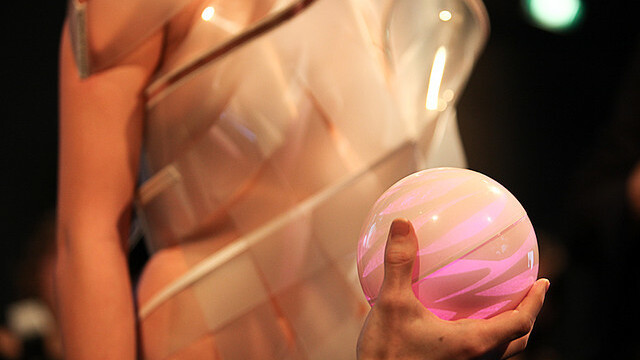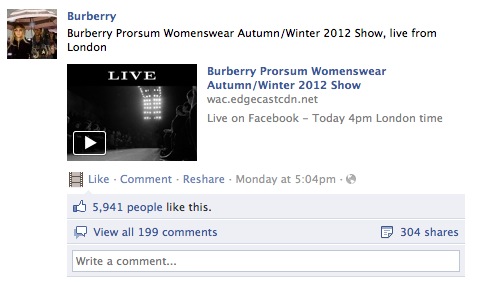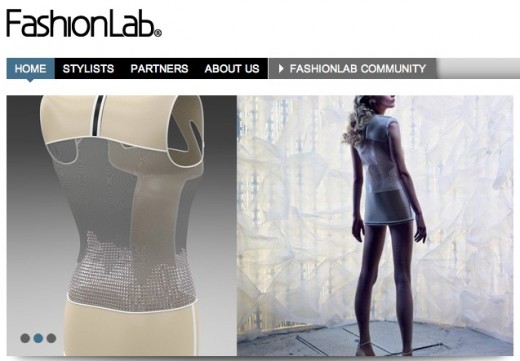
Karl Lagerfeld’s keynote interview at LeWeb a few months ago proves a point: fashion and technology are two words that go very well together. And this is just a start, as high tech will keep transforming what we wear in many ways this year.
From exclusive events to the world
Livestreaming exclusive events may seem an oxymoron. Yet, the fact that TED Talks are available online didn’t have a negative impact on attendance to its pricey and exclusive annual conference. On the contrary, it tremendously boosted the event’s visibility and its brand power.
In the same vein, the fashion industry is now giving fashion addicts a chance to get a full glimpse of events they couldn’t have dreamed of attending, and we expect this trend to keep on growing over the next months.
Just this week, in fact, Burberry gave its fans a chance to host the livestream its Womenswear Autumn / Winter 2012 collection on their own Facebook wall – and shop directly from the runway.

In other words, live streaming now gives Internet users a chance to get virtual access to VIP fashion events. This is also true of press coverage, as media outlets are increasingly using digital tools to provide their readers with real-time news.
The example of the Washington Post is particularly interesting. During New York Fashion Week, the newspaper used sites such as Pinterest and Instagram to constantly share comments and pictures with its audience. While it covered the runways, it also offered a look at what happens behind the scenes, offering a welcome complement to a social video app like Viddy.
The democratization of personal shopping
In one sense, livestreaming and live coverage are only signs of a wider phenomenon, which is the radical democratization of fashion. This isn’t just about prêt-à-porter; style itself is also much more accessible.
Not only can we monitor the latest trends on sites such as Wikifashion and find inspiration, but we can also share our looks online and get instant feedback from the fashion community, effectively improving our style.
Even more interestingly, elaborate algorithms increasingly give us a chance to get personalized advice and recommendations, while 3D and augmented reality let us try virtual clothes on from the comfort of our home or from a store:
High-tech meets high-fashion
 Although 3D is a useful feature for the rest of us, it is also a great modeling tool for fashion designers. This potential led the 3D company Dassault Systèmes to open an incubator called FashionLab, which is fully dedicated to exploring the ways in which 3D and high-tech solutions can help stylists.
Although 3D is a useful feature for the rest of us, it is also a great modeling tool for fashion designers. This potential led the 3D company Dassault Systèmes to open an incubator called FashionLab, which is fully dedicated to exploring the ways in which 3D and high-tech solutions can help stylists.
As a matter of fact, while technology is making fashion increasingly accessible, it is also contributing to a series of innovations that are quietly happening behind the scenes. While they won’t hit mainstream for a while, they could disrupt the fashion world over the next years.
The move towards intelligent couture has actually already started. What makes it even more appealing is that it now takes our environment into account. For instance, the fashion designer Ying Gao is creating interactive, sensor-equipped dresses that can respond to external signals, from flashing lights to our very own breath.
It’s not innovation for the sake of it; with the help of technology, fashion can help us engage with the world around us and protect the environment. One of the most promising trends is the emergence of eco-friendly textiles. It may seem science-fiction, but scientists have already developed a new fabric that cleans itself when exposed to sunlight.
This also goes beyond labs, as an emerging brand such as the Brazilian label Osklen is using innovative techniques to create eco-friendly and beautiful clothes. Could technology contribute to make 2012 the year of sustainable fashion around the world? Let’s hope so.
How do you hope fashion will impact technology in 2012? Let us know in the comments.
Get the TNW newsletter
Get the most important tech news in your inbox each week.
